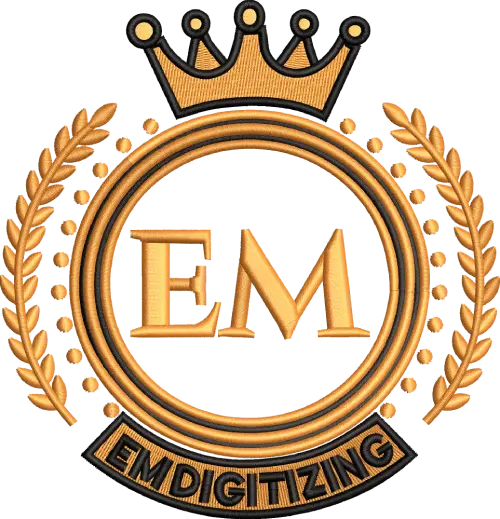Tienes la visión, tal vez incluso un logotipo, and you’;re ready to start a small printing business, Pero antes de invertir en esa primera impresora, there’;s a lot more to consider than just buying equipment and opening shop.
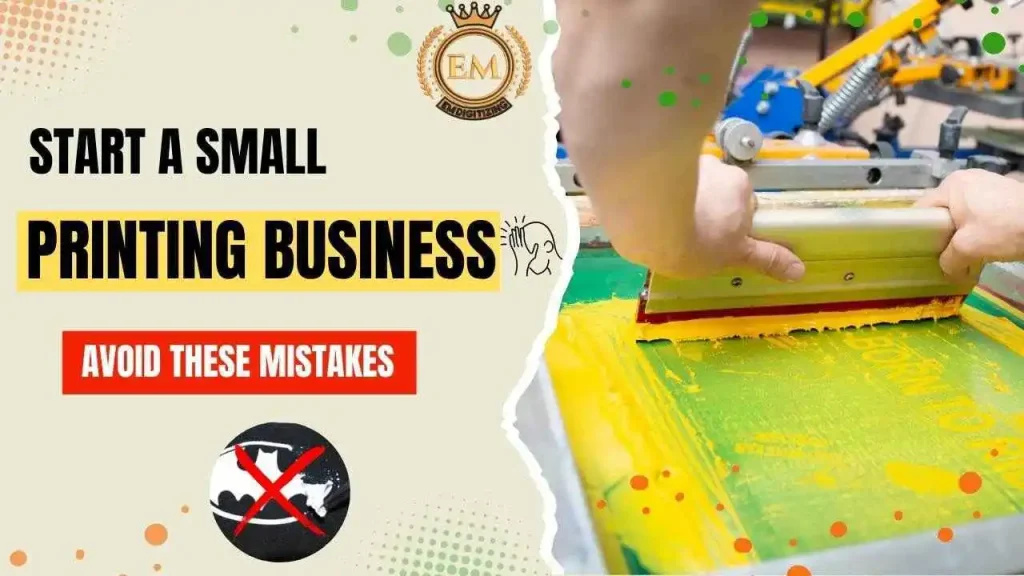
Plenty of new business owners get caught up in the excitement and miss crucial steps. This article uncovers the key errors you’ll want to dodge and shares smart alternatives that can help turn your business into a long-term success.
Whether you’;re printing apparel, tarjetas de visita, or promotional materials, the journey can be rewarding if you build it on the right foundation.
Iniciar un pequeño negocio de impresión: Evite estos errores
Error #1: Offering Too Many Services from the Start
Trying to serve everyone from day one might feel like a good strategy, but it’s often the fastest route to burnout.
New printing entrepreneurs often try to offer t-shirts, tazas, menus, decals, banners etc. But every type of product comes with different materials, herramientas, software, and customer expectations.
Start by identifying your core strength. Focus on 1–2 services that are in demand and relatively easy to master. Por ejemplo, flyer printing or business cards can be a great launch point. Once you nail those, expand strategically.
Looking to produce more specialized items like heat transfers? You’ll eventually need something like the best dtf printer for small business, but don’t rush into that until your foundation is strong.
Error #2: Skipping the Hands On Learning Phase
One of the most damaging errors people make when they start a small printing business is jumping in with zero real-world practice.
Watching tutorials is helpful, but it’;no es suficiente. Without physical experience adjusting print settings, handling various materials, and troubleshooting you’re likely to waste supplies and disappoint customers.
Here’s how to gain experience before launching:
- Offer free prints to friends or local businesses in exchange for feedback
- Work part-time or volunteer at a nearby print shop
- Use test runs and sample packs to explore printer settings and paper types
- Print personal projects to build confidence
If you’;re planning on investing in something like the best 3d printer for small business, get your hands dirty with the basics first. Understanding workflows saves money and your reputation.
Error #3: Choosing the Wrong Equipment for Your Business Model
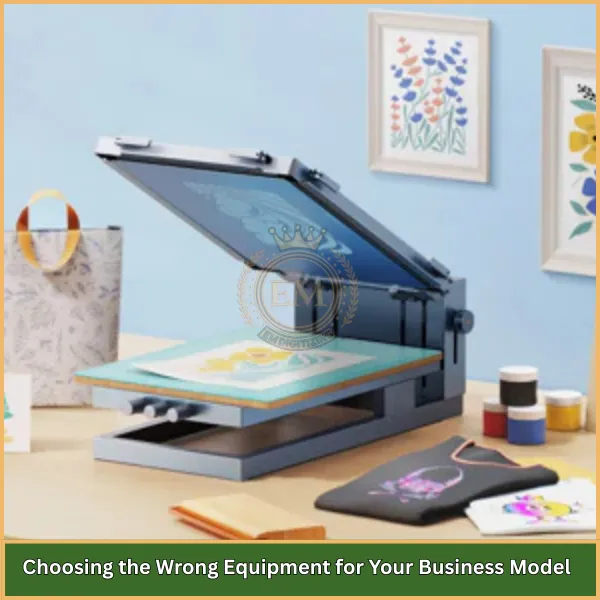
Your printer is the heart of your business. But not every top-rated”; machine is right for what you need.Por ejemplo, if your orders will focus on high-speed, versatile paper output like invoices, etiquetas, or restaurant menus the best all in one printer for small business should offer high-resolution color, support multiple paper sizes, and include scanning or copying functions. But if your plan is to dive into fashion or merch, you’ll need something compatible with heat transfer or direct-to-film techniques.
Too many first-timers pick hardware based on price or online hype, not compatibility. Always choose equipment based on:
- What you plan to print
- The materials your products will require
- Expected order volume
- Space available for setup
Error #4: Not Understanding Material Compatibility
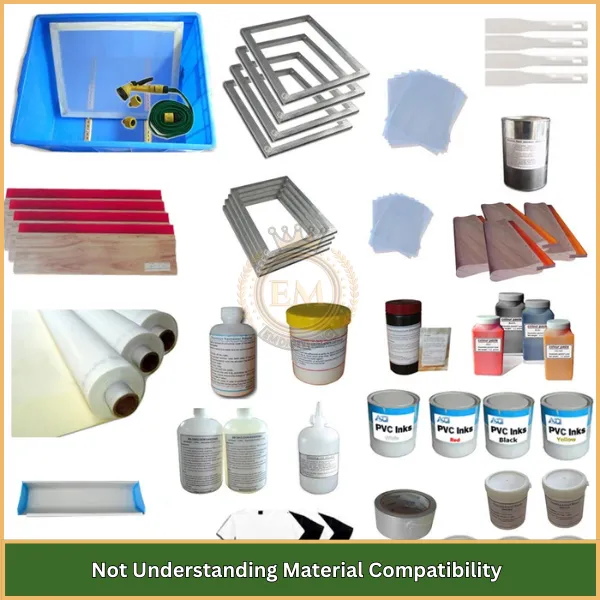
Great prints come from more than just a good machine your choice of material matters just as much.
Paper type, coating, espesor, and finish all affect how the final product looks and lasts.
Imagine printing takeout menus on regular paper. They’;ll smudge, tear, and feel unprofessional.
If you’re using poor-quality labels or non-weatherproof vinyl, your stickers won’t survive outdoor use.
Choose papers and substrates based on end-use. If you’;re unsure, order test kits from vendors. And always experiment before offering new materials to customers.
Even the best printer for small business won’t make poor materials look premium so get your supplies right.
Error #5: No Clear Budget or Financial Strategy
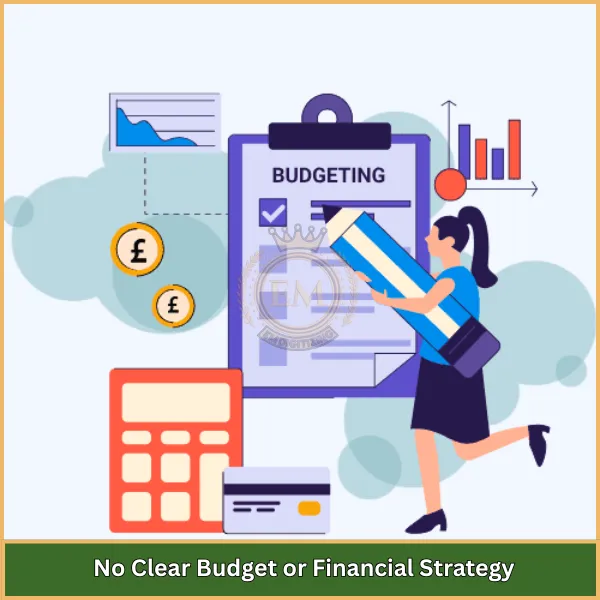
Starting a small printing business without a money plan? That’s a fast way to fail.Many new business owners splurge on gear and supplies without thinking through the costs of upkeep, software, utilidades, or even design services. Pricing your products too low to stay competitive but not enough to turn a profit is another common trap.
Pregúntate:
- What’s my total budget to get started?
- How much do I need to charge per product to cover costs and earn a profit?
- What will recurring monthly expenses look like?
- What’s my backup if sales are slow in the first few months?
- If you’;re tight on funds, look into the good printer for small business, one that delivers good results while being economical to maintain. Keep your operations lean until you’re consistently profitable.
Error #6: Ignoring the Customer Experience
Printing isn’t just about pushing buttons it’s about solving problems for your clients.
A customer might not know the difference between gloss and matte, but they’ll remember if their order looked dull or didn’t hold up. Poor communication, delayed responses, unclear pricing, or low-quality results can lead to bad reviews and lost referrals.
Build trust by:
- Offering clear service options and pricing
- Responding to inquiries quickly and professionally
- Educating your clients when needed (p.ej., recommending waterproof menus for restaurants)
- Delivering consistent quality across every order
Strong businesses grow on repeat customers not just one-off orders.
Consejo adicional: Forgetting to Build an Online Presence
You might think having great designs and reliable printing is enough, but without visibility, no one will know you exist.
Create a simple website, post your work on Instagram, and join local Facebook groups where small businesses look for service providers. In today’s world, being online is essential.
Even if your main work is local, people will search online before they walk into your store. Make sure they can find you.
If you’re looking to sell custom products or promote branded designs, your presentation matters as much as your production.
Veredicto final: Lay the Right Foundation for Success
need planning, las herramientas adecuadas, and real-world experience.
Avoiding the mistakes above will give you a solid head start. And if design quality is part of your challenge, you don’t have to go it alone.
EMdigitzing is here to help with sharp, high-quality vector art tailored for all kinds of printing whether you’;re doing screen printing, etiquetas, DTG, or film-based work. Our team provides: expert support around the clock, respuesta rápida (1 a 4 horas), 50% fuera de tu primer orden to get started risk-free, file types compatible with all printers.
Whether you’re just launching or scaling up, trust EMigitizing to make your prints look their best. Let’s build your brand together.
preguntas frecuentes
The ideal choice depends on your specific printing needs. If you’;re handling diverse tasks like documents, gráficos, or packaging materials, look for a model that balances quality, velocidad, and media compatibility. Reliable options come from brands like Brother, Canon, and Epson but always match the printer to your business type and expected workload.
Begin by creating labels through shipping providers such as FedEx, UPS, or USPS. You can print them using a regular inkjet or laser printer for occasional use. Sin embargo, if shipping is a daily task, a thermal label printer is more efficient, requires no ink, and delivers crisp results quickly.
There’s no single best pick it depends on your production scale and workflow. Look for a DTF printer with easy maintenance, steady ink flow, and a compatible curing process. Features like auto-cleaning, good color output, and software support are essential for consistent, quality results.
Focus on what you’ll be printing labels, documents, or custom apparel and how frequently. Then consider ongoing costs, available space, and whether features like scanning or wireless connectivity are important to you. Matching a printer’s functionality to your business needs is key to long-term success.
Basic setups can begin at around $5,000, covering entry-level equipment and materials. A larger or more specialized operation may require $15,000–$30,000 or more to include high-end printers, inventario, software, and marketing expenses. Start small if needed, and scale gradually.
Sí, especially with the growing demand for custom items, branding materials, and eco-friendly packaging. With the right niche and consistent quality, your printing business can be both sustainable and profitable well into 2025 y más allá.
